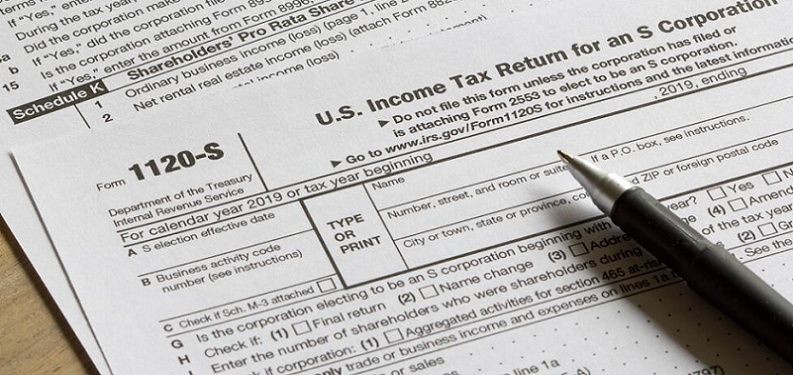
While S-Corporations provide unique benefits, including avoidance of double taxation and flexibility in profit distribution, they also bring forth specific complexities, especially when it comes to taxation. A lack of understanding about these complexities can lead to a multitude of tax mistakes, which can have hefty financial repercussions. Here we provide a comprehensive exploration of these common errors. From incorrect allocation of income, losses, and deductions, to late filing and misunderstanding of state-level S-Corp taxes, we break down each mistake, discuss its implications, and provide strategies to steer clear of them in the future.
Contents
- Understanding S-Corporation Taxation
- Common Mistakes in S-Corporation Taxation
- In-Depth Discussion of Each S-Corporation Common Mistake
- How to Avoid These Common S-Corporation Taxation Mistakes
- References
Understanding S-Corporation Taxation
Before we explore common tax mistakes made by S-Corporations, it’s crucial to gain a solid understanding of how S-Corporation taxation works. The tax structure of an S-Corporation differs significantly from other business entities, such as C-Corporations or Limited Liability Companies (LLCs).
Explanation of Pass-Through Taxation
S-Corporations are referred to as “pass-through” entities. This term means the corporation itself does not pay federal income taxes. Instead, the company’s profits or losses are passed through to the shareholders, who report these amounts on their individual tax returns. This structure can provide considerable tax advantages, as it avoids the double taxation issue that C-Corporations face (where both the corporation and the shareholders are taxed on the same profits). Understanding this pass-through structure is essential for effectively navigating S-Corp taxation and avoiding common tax mistakes.
Overview of S-Corporation Tax Forms (1120S, Schedule K-1)
For taxation purposes, S-Corporations are required to file Form 1120S, which is the U.S. Income Tax Return for an S-Corporation. This form reports the corporation’s annual income, deductions, and other important financial information. It does not calculate the tax liability of the corporation; rather, it helps the IRS determine whether the income, losses, and other items have been correctly reported to the shareholders.
In addition to Form 1120S, each shareholder receives a Schedule K-1. This document outlines the shareholder’s share of the corporation’s profits, losses, deductions, and credits. Each shareholder should then report this information on their individual tax return (Form 1040) [1].
An area of S-Corp taxation that often causes confusion is the difference between wages and distributions. If a shareholder provides services to the corporation, they are considered an employee and should receive reasonable compensation in the form of wages. These wages are subject to employment taxes.
Distributions, on the other hand, represent a shareholder’s portion of the company’s profits after all expenses (including wages) have been paid. Importantly, these distributions are not subject to employment taxes. Therefore, it’s tempting for shareholder-employees to take all profits as distributions to avoid employment taxes. However, the IRS requires that shareholder-employees receive “reasonable compensation” for their services before any profits are distributed.

Common Mistakes in S-Corporation Taxation
There are several common pitfalls S-Corporations often stumble upon, and these mistakes can lead to significant tax penalties or additional tax liability. By identifying and understanding them, you can better position your S-Corp to avoid these errors.
Incorrect Allocation of Income, Losses, and Deductions
One of the benefits of an S-Corporation is the ability to pass corporate income, losses, deductions, and credits through to shareholders. However, these amounts must be allocated according to each shareholder’s proportionate interest in the corporation. Mistakes often occur when these amounts are not distributed correctly, leading to potential IRS scrutiny and penalties.
As mentioned earlier, the IRS requires that S-Corporations pay “reasonable compensation” to shareholder-employees for their services before non-wage distributions are made. If the IRS deems that a shareholder-employee’s compensation is unreasonably low compared to their distributions, it may reclassify a portion of the distributions as wages, leading to additional employment taxes and penalties [2].
Mistaken Treatment of Fringe Benefits
Fringe benefits, such as health insurance, are often a point of confusion for S-Corporations. These benefits are typically deductible by the corporation but can be deemed taxable income for shareholder-employees owning more than 2% of the corporation. Misunderstanding how to treat these benefits can result in underreported income and unexpected tax liabilities.
Late Filing and Payment Errors
Late filing of Form 1120S or failure to pay estimated taxes can result in penalties and interest charges. Small businesses often underestimate the importance of timely tax filing and payments, which can lead to costly mistakes.
Lack of Understanding About State-Level S-Corp Taxes
While S-Corporations generally do not pay federal income tax, they may be subject to state-level taxes, which vary from state to state. Some states do not recognize the S-Corp status, while others impose a tax or a fee on S-Corporations. Misunderstanding or overlooking these state-level taxes can result in unexpected tax liabilities and penalties.

In-Depth Discussion of Each S-Corporation Common Mistake
Understanding the common mistakes is just the first step in avoiding them. Here we examine each mistake, discussing examples, potential tax consequences, and providing some guidance on how to handle these issues.
Mistake 1: Incorrect Allocation of Income, Losses, and Deductions
Explanation and Examples
Each shareholder’s proportionate share of income, losses, deductions, and credits should reflect their ownership interest in the corporation. For example, if a shareholder owns 25% of the corporation, they should report 25% of the corporation’s income or losses on their personal tax return.
Sometimes, S-Corps mistakenly allocate these amounts based on the number of shares each shareholder owns, without considering different classes of shares or any special allocation agreements that may exist. Other times, these amounts might be allocated unevenly in an attempt to optimize individual tax situations [3].
Potential Tax Consequences
Incorrect allocation of these amounts can result in significant tax consequences. The IRS may correct the allocation and impose penalties and interest on any underpaid tax. Furthermore, shareholders may face an increased tax liability if their share of the corporation’s income was underreported.
Explanation and Examples
As previously discussed, S-Corps are required to pay reasonable compensation to shareholder-employees before making non-wage distributions. The term “reasonable compensation” is subjective and depends on various factors, including the shareholder’s role, responsibilities, and the industry standard for similar services.
Some S-Corps might attempt to minimize employment taxes by paying minimal wages and taking most of the company’s profits as distributions. For instance, a shareholder-employee who actively manages the corporation and makes significant contributions to its profits might only receive a small salary and take the majority of their income as distributions.
Potential Tax Consequences
The IRS pays close attention to this issue and may reclassify distributions as wages if it finds that the wages were unreasonably low. This reclassification can lead to additional employment taxes and penalties.
Mistake 3: Mistaken Treatment of Fringe Benefits
Explanation and Examples
Fringe benefits like health insurance, life insurance, and company vehicles can be tricky. While they are generally deductible by the corporation, they can be deemed taxable income for shareholder-employees owning more than 2% of the corporation [4].
For instance, an S-Corp might deduct health insurance premiums as a business expense but fail to include these premiums in the wages of a 2% shareholder-employee. This oversight can result in underreported income.
Potential Tax Consequences
Failure to properly treat these benefits can result in underreported income and additional tax liabilities for the shareholder-employee. The corporation may also face penalties for underpayment of employment taxes.
Mistake 4: Late Filing and Payment Errors
Explanation and Examples
Staying on top of tax deadlines is critical. The IRS requires S-Corps to file Form 1120S by the 15th day of the third month following the end of the corporation’s tax year (usually March 15 for calendar-year corporations). Estimated tax payments are also due quarterly.
Failing to mark these important dates can lead to late filing and late payment mistakes. For example, an S-Corp might mistakenly believe its tax deadline aligns with the individual tax deadline in April and miss the March 15 deadline.
Potential Tax Consequences
Late filing and payment errors can result in penalties and interest. The IRS imposes a monthly penalty of 5% of the unpaid tax for each month or part of a month the return is late, up to a maximum of 25%.
Mistake 5: Lack of Understanding About State-Level S-Corp Taxes
Explanation and Examples
State-level S-Corp taxes vary widely. Some states, like New York and New Jersey, tax S-Corps on their net income. Others, like California and Illinois, impose a flat fee. Some states do not recognize the S-Corp status at all, subjecting S-Corps to the same taxation as C-Corps.
S-Corps often overlook these state-level taxes, assuming that the federal pass-through treatment applies at the state level as well. This misconception can result in unexpected tax bills.
Potential Tax Consequences
Failure to understand and comply with state-level tax regulations can lead to underpayment of state taxes, resulting in penalties and interest. Furthermore, the corporation might face additional scrutiny from the state tax authority, which can lead to a more comprehensive audit.

How to Avoid These Common S-Corporation Taxation Mistakes
Knowledge is the first line of defense against taxation mistakes. Now that we’ve explored the common errors that S-Corporations often make, let’s discuss some strategies and best practices to prevent these issues and safeguard your business’s financial health.
Strategy 1: Maintain Accurate Records
Accurate and timely record-keeping is essential to correctly allocate income, losses, deductions, and credits. Be sure to keep track of each shareholder’s ownership interest and any changes that might affect this interest throughout the year. Use this information to guide your allocation of these amounts at the end of the year.
Remember, the IRS requires S-Corporations to pay reasonable compensation to shareholder-employees before making non-wage distributions. This compensation should reflect the shareholder’s contribution to the corporation in terms of effort, time, expertise, and the value they bring to the company. Regularly reviewing and adjusting these wages can help ensure that they stay reasonable and in line with industry standards [5].
Strategy 3: Understand the Tax Treatment of Fringe Benefits
Before providing fringe benefits to shareholder-employees, make sure you understand how these benefits should be treated for tax purposes. Generally, these benefits should be included in the wages of shareholder-employees who own more than 2% of the corporation. Consulting with a tax professional can help you navigate the tax implications of these benefits and avoid any potential pitfalls.
Strategy 4: Stay on Top of Tax Deadlines
Never underestimate the importance of tax deadlines. Mark these dates on your calendar and set reminders to ensure you file your tax returns and make your estimated tax payments on time. If you’re worried about missing these deadlines, consider hiring a tax professional or using tax software that can help keep you on track.
Strategy 5: Understand State-Level S-Corp Taxes
Finally, take the time to understand the state-level tax implications of your S-Corp status. This understanding is especially crucial if you do business in multiple states. Each state has its own rules regarding S-Corp taxation, and these rules can significantly impact your tax liability. Consider consulting with a tax professional who specializes in state-level taxation to help you navigate these complexities.
References
[1] Actions Needed to Address Noncompliance with S-Corporation Tax Rules
[2] S Corp Late Filing Penalty: Everything You Need to Know
[3] Top Tax Filing Mistakes—and How to Avoid Them
[4] 8 Business Tax Errors That Could Really Cost You
[5] The Million Dollar S Corporation Mistake
